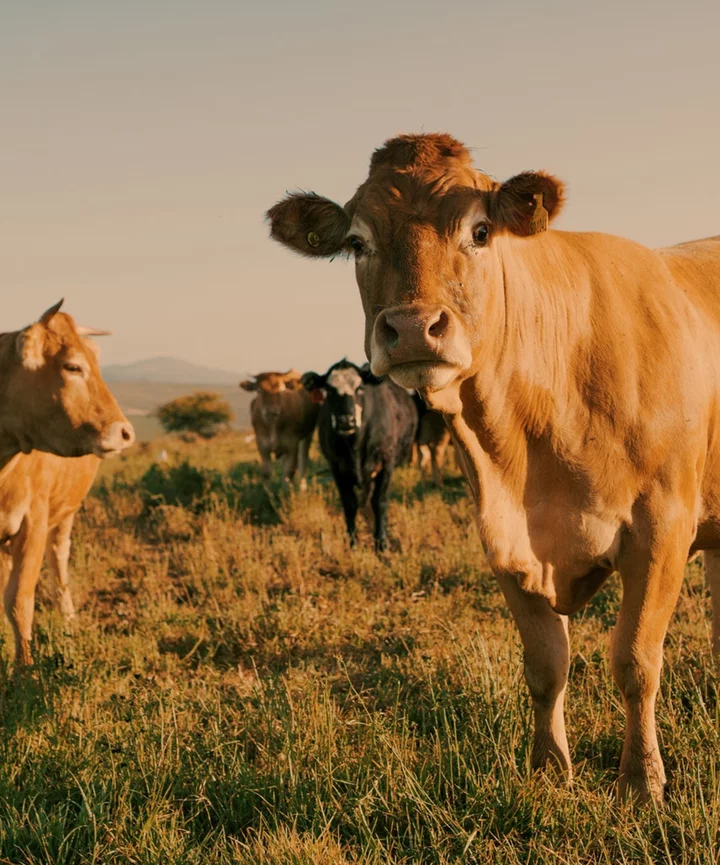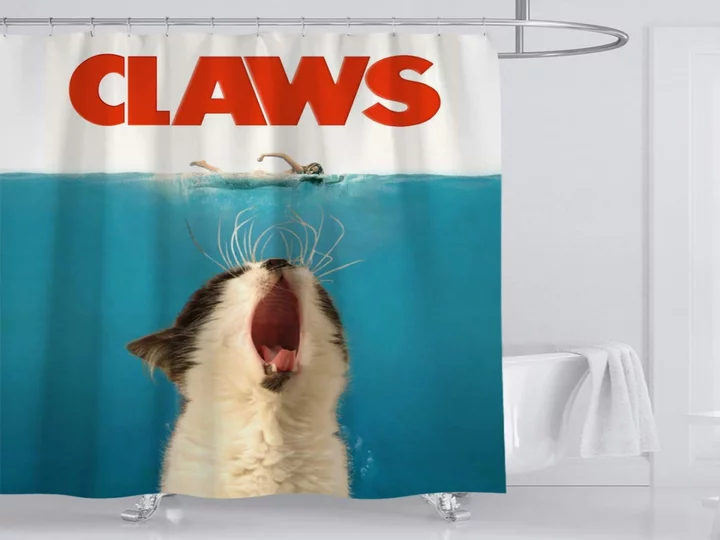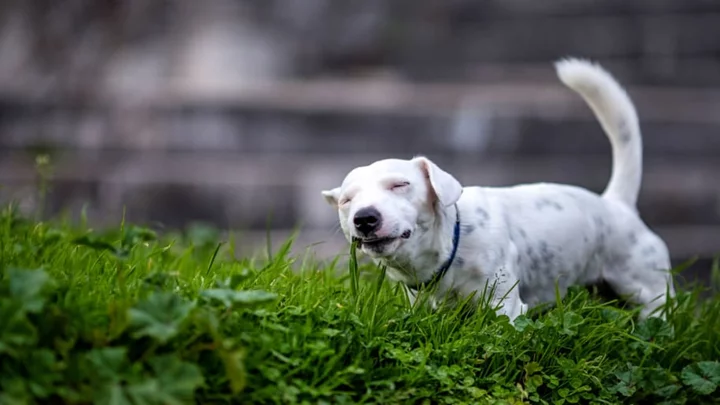I’ll be the first to admit that I don’t usually read ingredient lists on my skincare. I’ll check the callouts on the front label to get the big picture so I know when and how to use it, but I don’t dig much deeper unless something bothers my skin — or makes it look amazing, which is what happened after I started using Béla Nektar Cerate of Immortelle Ancestral Recuperative Balm.
My face loves the stuff; I slather it on every night and wake up looking better than I did the day before. My skin is dewier, less congested, and I have seen next to no breakouts since using it. There are a few intriguing components that go into this unique formula (including CoQ10 and milk lipids), but the most controversial is the balm’s star ingredient: bovine tallow, essentially cow’s fat that’s been rendered for cosmetic use.
I was skin-fluenced, as they say: Hannah Bronfman, an on-camera personality and wellness expert based in NYC, was posting about the product in Instagram Reels and TikToks, even mentioning it in (unsponsored) press interviews. I’d never heard of Béla Nektar, and it’s my job to know about skincare brands, so I got my hands on a sample. After using the balm consistently every night for a few weeks, my results and genuine enthusiasm mirrored Bronfman’s. “The way my skin loves this product is just a fact,” she explains to me via email. “My skin soaks it right up, it has great slip for when I want to use a gua sha tool or cupping after, and I have never had any breakouts while using it.”
I certainly cosign the claim that my skin seems to be functioning better since using tallow balm. It’s an indie gem, I thought. But when I started telling friends and colleagues about my new favorite product, dropping the punchline, “Yeah, it’s actually made with bovine tallow!,” their response was perplexed at best as they tried to wrap their heads around beef and skincare in the same sentence.
What is tallow — and why is it in skincare?
To be clear, this is not beef skincare. The tallow has been rendered for cosmetic use, meaning it’s been melted down to the point where it’s more like a scentless, colorless oil. Presented with the substance without context, you would not think, That came from a cow. That said, I get that it sounds off-putting. In an effort to understand tallow as a skincare ingredient — specifically, its role in this seemingly magical herbaceous, golden-yellow emollient I’ve been rubbing on my face — I spoke to Lauren Bradley, the founder of L.A.-based skincare label Béla Nektar, which is the only luxury skincare brand that I know of currently using tallow.
Back in 2018, Bradley, a former couture stylist, started creating her own skincare using mostly botanical ingredients she gathered around her home in Echo Park. She became obsessed with the idea that natural, plant-derived elements, like rosemary and neroli from bitter orange trees, could be used alongside animal-derived fats such as ghee and tallow. They create what she calls a “full spectrum” skincare product without using lab-synthesized isolates — essentially a lab-made copy of something that exists in nature. For example, vitamin A in the form of retinyl palmitate can be sourced from animal-derived sources, like dairy, eggs, or bovine tallow. But in modern skincare, vitamin A most often comes in the form of a lab-manufactured retinol isolate. Lab-synthesized ingredients show innovation in technology and some say they’re the future of sustainability, though someone who’s fanatical about “natural” ingredients might be displeased to find isolates in their skincare and would instead favor a genuine animal byproduct.
After learning about tallow’s vitamin and mineral profile (it contains vitamins A, D, E, K, and fatty acids), Bradley thought of putting it in skincare. “Tallow is amazing because it’s bio-identical to human mammalian lipids — and that’s why you’re getting such great results,” Bradley explains to me over the phone when I tell her my newfound glow when I began using this balm. “Your body is like, ‘Oh, I know exactly what to do with this.’ Tallow is a bio-identical lipid that is going to speak to your skin in the same language that your skin speaks.” The premise is that tallow is closely linked to the skin’s sebum or oil. Sebum is primarily composed of triglycerides, a type of fat. Tallow consists mainly of triglycerides as well.
I definitely get the sense that the Béla Nektar balm is helping my skin work better — it’s like my pores are producing the perfect amount of oil to give my skin a dewiness to the point that I’m not breaking out but fine lines are softened. Since I started using the balm, my skin has seemingly maintained an ideal moisture balance (I can tell from the dewiness) and cell turnover as well (there’s minimal congestion).
How tallow became a niche skincare trend
Bronfman is just one example of the niche wellness-minded subset seduced by Béla Nektar’s tallow balm — the demographic feels very specific to an Erewhon shopper with money. Bradley gave an early jar (made of a weighty glass called Miron that promises to filter out the light sources that lead to product degradation) to her friend Adria Petty (“you know, Tom Petty’s daughter,” she clarifies). Bradley says that Petty then introduced her to a “holistic” Santa Monica facialist, Kim Hoffman Davis, who Bradley says “works with the upper echelon of Hollywood.” Hoffman Davis loved the Béla Nektar products and began using the line in her facials, recommending it to her clients. Following a treatment with Hoffman Davis, Bronfman flew back to her home in New York City with a jar of the Cerate of Immortelle Ancestral Recuperative Balm and began using it and posting about it, extolling the benefits of tallow to her followers. (There are a million, myself included.)
I asked Bronfman about the reception amongst her followers. Was there confusion or backlash about the use of an animal byproduct? “My followers, for the most part, were excited to hear about tallow and a lot of them were actually already familiar with tallow as an ingredient,” Bronfman says. “For the vegan followers, I mean, you can’t please everyone, and I have always been very transparent with my own approach to skincare and wellness.”
Charlotte Palermino, an esthetician and founder of Dieux Skin, posted a reel back in April addressing her followers’ — some of whom I’d imagine saw Bronfman’s TikTok — questions around “beef fat” in skincare. For her part, Palermino doesn’t demonize tallow; she’s not using it herself, but understands why people do. She compared tallow to rubbing Crisco (a shortening that gets its viscous texture from partially hydrogenated vegetable oil) on your face, which her mother did as a child — because that was a standard way to moisturize the skin well before skincare became the multi-billion dollar industry it is today.
The history of tallow in skincare
If you go back in history, animal-derived fats have been used in beauty for thousands of years, mainly in soaps and salves. Research shows that the earliest emollients in human history were sourced from animal fats and vegetable oils. For example, a Chinese archaeological report shows animal fat present in what appears to be a face cream that is an estimated 2,700 years old. In modern agriculture, we’ve found alternatives to tallow, like palm oil (also a key ingredient in Crisco). While cheaper to scale and manufacture, palm oil has been linked to deforestation and comes with its own set of controversies.
During her formulation process, Bradley tried vegetable oils in lieu of using tallow, but none of them created the texture she wanted. “Coconut butter is going to get mealy in your cabinet and I was not down with that,” she says. “I tried shea butter and avocado oil, but I was getting temperature shifts. I wanted it to be smooth, so I shifted it to a tallow.”
Of course, this involved sourcing animal fat from a reputable, responsible source. Disclaimer: I eat meat as a part of my diet, so I don’t subscribe to a vegan lifestyle, but I’m of course concerned about the treatment of animals. Bradley tells me that she upcycles the tallow in Béla Nektar products from “a small, regenerative farm where [the animals are] grass-fed and grass-finished,” meaning they’re not eating corn or anything containing antibiotics. The tallow, she says, is a byproduct of the farm that would otherwise go to waste.
What are the skincare benefits of tallow?
I mention Bradley’s “mammalian lipid recognizing mammalian lipid” theory to my favorite no-B.S. dermatologist, Shereene Idriss, MD, and she rolls her eyes. Though she says tallow does have an impressive fatty-acid profile, it can be replicated using ingredients derived from plants or developed in a lab. “Tallow has a combination of fatty acids: oleic acid, palmitic acid, and stearic acid,” she offers. All of these forms of fatty acids are helpful in supporting the skin’s barrier (which we’ll get to). “Are you going to find all of those ingredients from a single plant source? Probably not,” explains Dr. Idriss, “but you can combine those [fatty acids] to get a similar effect.” What she’s getting at is that you can absolutely achieve similar results through fully vegan skincare.
As a dermatologist with her own Leaping Bunny-certified brand of skincare products, Dr. Idriss doesn’t use or endorse tallow, or any animal byproduct for that matter. “My issue is that I don’t know how ethically sourced it is,” she explains. Moreover, she notes that a lot of the skincare products we use today originally used animal sources, but now we have effective alternatives. For example, stearic acid can be derived from animal fat — or it can be derived from plants, Dr. Idriss explains. “There’s also squalane, which was historically derived from shark liver, but now you can make it in a lab or it can even be derived from plants.”
Most of the squalane (an emollient that mimics your skin’s natural oils) you’ll find in products these days, like those from Biossance, comes from sugarcane. One commonplace skincare example of an animal-based ingredient is lanolin, which is derived from sheep’s wool and is used as an emollient in products like Aquaphor that help to keep skin soft. “Even that’s slightly different than tallow,” Dr. Idriss says. “You don’t have to kill the sheep to get lanolin, but you do have to kill a cow to get its tallow.” You’ll have to draw your own ethical line that you’re comfortable with.
What are the benefits of fats in skincare?
Fats are critical to healthy skin functioning, and that’s something we don’t hear about all that often. “Our skin needs a certain amount of fat because that’s what holds the barrier together,” explains Dr. Idriss. “It’s like a brick and mortar — our skin cells are the brick and the mortar is made up of a fattier substance that holds it together.” While fats come in all shapes and sizes, Dr. Idriss says, “It’s not the source of origin, but the type of fat that you’re putting into your skin that ultimately makes the biggest difference.” She ventures I might see a similar result with a more mainstream skin cream, like SkinCeuticals Triple Lipid Repair Cream, which is formulated to give skin a specific ratio of fats and fatty acids — mainly oleic and linoleic acid sourced from sunflower oil — to help restore the barrier and encourage natural self-repair. (SkinCeuticals only uses vegetable sources of fatty acids in its formulas.)
From her perspective as a dermatologist, Dr. Idriss suggests that my dry skin has become more soft and supple as a result of using a tallow-based balm because of the ingredient’s full-spectrum composition of vitamins and lipids. The vitamin A present also provides a natural alternative to retinol, so I’ve discontinued any other forms of vitamin A as well. Additionally, this particular formula has milk lipids, CoQ10 (which protects the skin from free radicals), and Baltic amber (a resin from an eponymous tree containing succinic acid, known to help with uneven skin tone).
Is tallow something I should use?
Ultimately, I like this balm but I recognize that it would be irresponsible to deduce that my skin is looking better because of the tallow — it could be a response to CoQ10 or, more likely, what Bradley calls the “symphony” in this formula. “You can’t pinpoint and say that this result is because of the animal fat,” says Dr. Idriss. “It’s not causative unless there’s a real, double-blind, randomized study. If origin matters, that would tell you.”
While Béla Nektar is still a small-scale operation, Bradley is convinced she’s onto something big with tallow. She says it’s part of a “wave” where people are turning their backs on a vegan lifestyle for various personal reasons. “There’s a reason people are using bone broth and ghee and butter,” she says. Part of that reasoning would be to utilize the robust nutritional profile derived from animal byproducts, as civilizations have done for generations, and making the most of every part of the animal, including those that would otherwise be discarded.
When I ask her if wholesale retailers have hesitation about stocking a face balm with “bovine tallow” as the first ingredient, Bradley tells me that she’s keeping the label direct-to-consumer and small-batch on purpose. To anyone who doubts the come-up, she’s confident they’ll be proven wrong: “It’s going to be like Pretty Woman,” she says, “where I’m like, ‘Big mistake. Huge.’”
As far as any consumer interest goes, Addison Cain, Beauty Strategy & Innovation Manager at Spate, says it’s “negligible” — as in, there’s no search data to support that claim. “Beef tallow skin care sees 590 searches on average each month,” Cain says, which is very low compared to other ingredients. “Low search volumes are attributed to low consumer awareness; part of this is that [tallow is] not included in many popular brands as a key ingredient.” That doesn’t mean it’s destined to disappear from our radar entirely, but it might fall on brands who already have name recognition to make it happen. “During the skincare boom of early lockdown, consumers became increasingly educated on skincare ingredients, The Ordinary being a key teacher,” Cain says. “They made ingredients more recognizable and enticing to consumers. If beef tallow became a key feature of a popular brand, it would gain increased awareness.”
However, Cain notes an important impasse to scalability here. “Beef tallow also has to contend with rising searches for ‘cruelty-free’ across skincare,” she explains, adding that searches for cruelty-free skincare are up 12.4% year over year.
More directly, I should be clear: I don’t think that animal byproducts are what people need in skin care. I’m also not suggesting that you ever use cow tallow, or that animal-derived fats are superior to anything that comes from a lab. But the story behind what goes into this balm definitely gave me something to chew on. I’m going to nurse my jar of Cerate of Immortelle Ancestral Recuperative Balm because it really is doing wonders for my skin — but once I scoop out every last bit, maybe I’ll consider switching to a less controversial fat source and see if I get comparable results.









